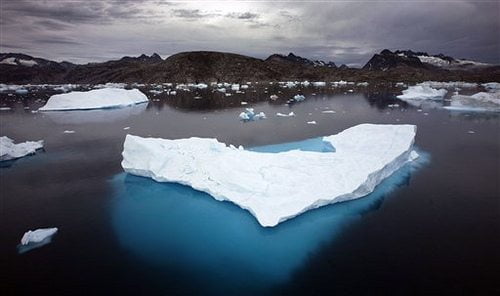

Environment
Climate’s ‘annual physical’ reveals record-breaking global warming
In 2013 almost all climate indicators – high temperatures, rising sea levels, Arctic sea ice coverage – were consistent with a globally warming planet, according to a comprehensive new report.
The State of the Climate 2013 report, published on Thursday by the American Meteorological Society, was compiled by 425 scientists from 57 countries.
The 212-page document – compared to a patient’s “annual physical” – finds that almost all evidence suggests that the health of the climate is deteriorating.
Average surface temperatures continued to rise. Independent datasets show 2013 was one of the warmest years since measurements began, with estimates placing it between the second and sixth hottest on record.
In Australia, it proved to be the number one warmest year on record.
Similar trends have also been confirmed in the oceans. Again, independent datasets identify 2013 as being in the top ten hottest years on record for sea surface temperatures.
This warming extended to the Arctic, where sea ice extent recovered slightly from a record low in 2012 but was still at its sixth lowest since satellite observations began in 1979.
Driven by ice melt in the Arctic and elsewhere, global mean sea level continued to rise, increasing by 3.8 millimetres.
“These findings reinforce what scientists for decades have observed: that our planet is becoming a warmer place,” said NOAA administrator Kathryn Sullivan.
But perhaps most concerning of all is that the concentration of atmospheric carbon – the greenhouse gas largely responsible for global warming – reached a historically high global average of 395.3 parts per million (ppm) over 2013.
April of this year proved to be the first month in human history in which levels of CO2 averaged at over 400 ppm, suggesting the trends observed in State of the Climate 2013 are only set to grow more severe.
“The take-home message here is that the planet — its state of the climate — is changing more rapidly in today’s world than at any time in modern civilization,” Tom Karl, director of NOAA’s National Climatic Data Center, told Climate Central.
“If we want to do an analogy to human health, if we are looking at our weight gain and we are trying to maintain an ideal weight, we are continuing to see ourselves put on more weight from year to year,” he said.
Scientists fear that on our current trajectory, mankind will fail to limit global temperature rises to below 2C from pre-industrial times. Above this threshold, suggested by scientists and agreed by world leaders, experts believe irreversible tipping points will be set in motion.
In a landmark report published last year, the Intergovernmental Panel on Climate Change (IPCC) set the world’s first ‘carbon budget’.
The report warned that mankind must emit no more than 1 trillion tonnes of carbon by 2100 to have just a decent chance of keeping temperatures below the target. By 2011, around 530 gigatonnes had already been emitted.
According to some analyses, the world will spend this carbon budget before 2050, but experts insist there is still hope.
A report submitted to the UN this week found that with international cooperation and significant investment in energy efficiency, low-carbon energy and fuel switching, the world’s biggest polluters could decarbonise before it is too late.
Photo: coaljoe via Flickr
Further reading:
Global warming: May 2014 hottest month on record, says Noaa
UN: 13 of 14 warmest years on record were in 21st century
Climate change causes Australian temperatures to break records in 2013
April carbon dioxide levels above landmark 400ppm threshold for entire month


 Environment9 months ago
Environment9 months agoAre Polymer Banknotes: an Eco-Friendly Trend or a Groundswell?

 Environment11 months ago
Environment11 months agoEco-Friendly Home Improvements: Top 7 Upgrades for 2025

 Features8 months ago
Features8 months agoEco-Friendly Cryptocurrencies: Sustainable Investment Choices

 Features9 months ago
Features9 months agoEco-Friendly Crypto Traders Must Find the Right Exchange





























